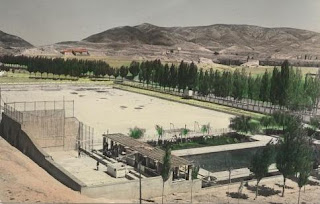 |
| Originally called the Campo de Fútbol Calvo Sotelo, this has been the home of Andorra CF since its formation in 1957 |
 |
| Renamed Instalaciones Deportivas de Endesa and with a temporary extension to the west stand |
 |
| The old stadium scrubbed up rather well after a bit of TLC in 2007 |
